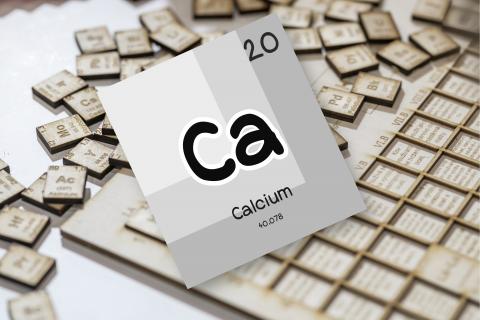A link between mitochondrial shape and function in Ca²⁺ signaling

Redoxoma Highlights by Sergio Menezes and Alicia Kowaltowski
Corresponding author e-mail: alicia@iq.usp.br
Differently from what one might expect from the textbook representations, mitochondria are not static organelles which are always in well-defined round shapes. In fact, they are highly dynamic organelles which undergo constant cycles of fission and fusion with nearby mitochondria [1]. “mitochondria are not static organelles … in well-defined round shapes” The balance between these fusion and fission events within the cell is what will define the shape of the mitochondrial network, which can range all the way from several separate round shaped mitochondria (high fission, low fusion balance) to very interconnected networks of elongated mitochondria that span throughout the cell (high fusion, low fission balance) [1]. Several factors like cell type, nutrient availability, progression through the cell cycle and even pathological conditions contribute to this fusion/fission balance within the cell [2, 3]. The study of these dynamic modulations of mitochondrial morphology is broadly called "mitochondrial dynamics" [1], and is a field that has received a lot of attention in the last two decades.
In our recent study accepted for publication in The Faseb Journal [preprint available at https://www.biorxiv.org/content/10.1101/624981v1], we show a novel role for mitochondrial dynamics in regulating cellular Ca2+ signaling and homeostasis. “we show a novel role for mitochondrial dynamics in regulating cellular Ca2+ signaling and homeostasis” Mitochondria forced into a pro-fusion phenotype through the inhibition of the fission protein DRP1 (by competition with a dominant-isoform) presented increased mitochondrial Ca2+ uptake rates and maximal uptake capacity, while mitochondria forced to a fission phenotype by the knockdown of the fusion protein MFN2 showed the opposite effect. Mitochondrial Ca2+ uptake is a process mediated by the entry of Ca2+ ions in the mitochondrial matrix through the protein MCU (mitochondrial calcium uniporter) driven by the negative-inside mitochondrial membrane potential, and has been extensively shown to impact several processes involving Ca2+ signaling in the cell [6]. In our work we also show that one of these regulated Ca2+ uptake processes, known as store-operated Ca2+ entry (a homeostatic mechanism by which cells are capable of replenishing their ER Ca2+ stores by promoting extracellular Ca2+ entry through the membrane) is modulated by mitochondrial morphology, with more fragmented mitochondria resulting in an impairment of this process, while more fused mitochondria resulted in a faster activation of extracellular Ca2+ entry. We also have observed a reduction in basal cytoplasmic and ER Ca2+ levels in the cells with more fragmented mitochondria, which was associated with increased levels of ER stress markers, showing that mitochondrial morphology can also regulate these aspects of cellular Ca2+ homeostasis.
By showing that the modulation of mitochondrial morphology can impact mitochondrial Ca2+ uptake and promote changes in Ca2+ homeostasis in the cell, this work establishes a new connection between mitochondrial dynamics and cell signaling.
References
- L. Tilokani, S. Nagashima, V. Paupe, J. Prudent. Mitochondrial dynamics: overview of molecular mechanisms Essays In Biochemistry, 62(3): 341–60, 2018. | doi: 10.1042/ebc20170104
- M. Liesa, O. Shirihai. Mitochondrial Dynamics in the Regulation of Nutrient Utilization and Energy Expenditure Cell Metabolism, 17(4): 491–506, 2013. | doi: 10.1016/j.cmet.2013.03.002
- R. Horbay, R. Bilyy. Mitochondrial dynamics during cell cycling Apoptosis, 21(12): 1327–35, 2016. | doi: 10.1007/s10495-016-1295-5
- M. F. Forni, J. Peloggia, K. Trudeau, O. Shirihai, A. J. Kowaltowski. Murine Mesenchymal Stem Cell Commitment to Differentiation Is Regulated by Mitochondrial Dynamics Stem Cells, 34(3): 743–55, 2015. | doi: 10.1002/stem.2248
- M. Vig, J. Kinet. Calcium signaling in immune cells Nature Immunology, 10(1): 21–7, 2008. | doi: 10.1038/ni.f.220
- A. Spät, G. Szanda, G. Csordas, G. Hajnóczky. High- and low-calcium-dependent mechanisms of mitochondrial calcium signalling Cell Calcium, 44(1): 51–63, 2008. | doi: 10.1016/j.ceca.2007.11.015
Sergio Menezes and Alicia Kowaltowski, from Department of Biochemistry,
Institute of Chemistry, University of São Paulo, Brazil
Add new comment